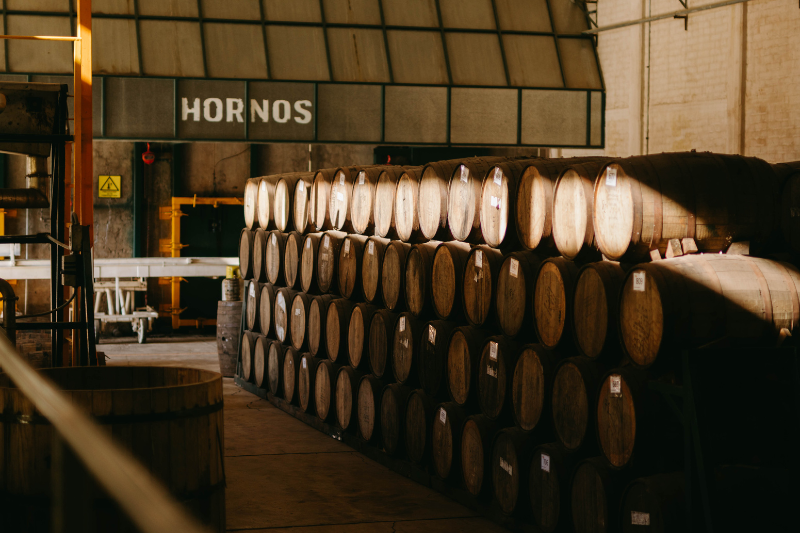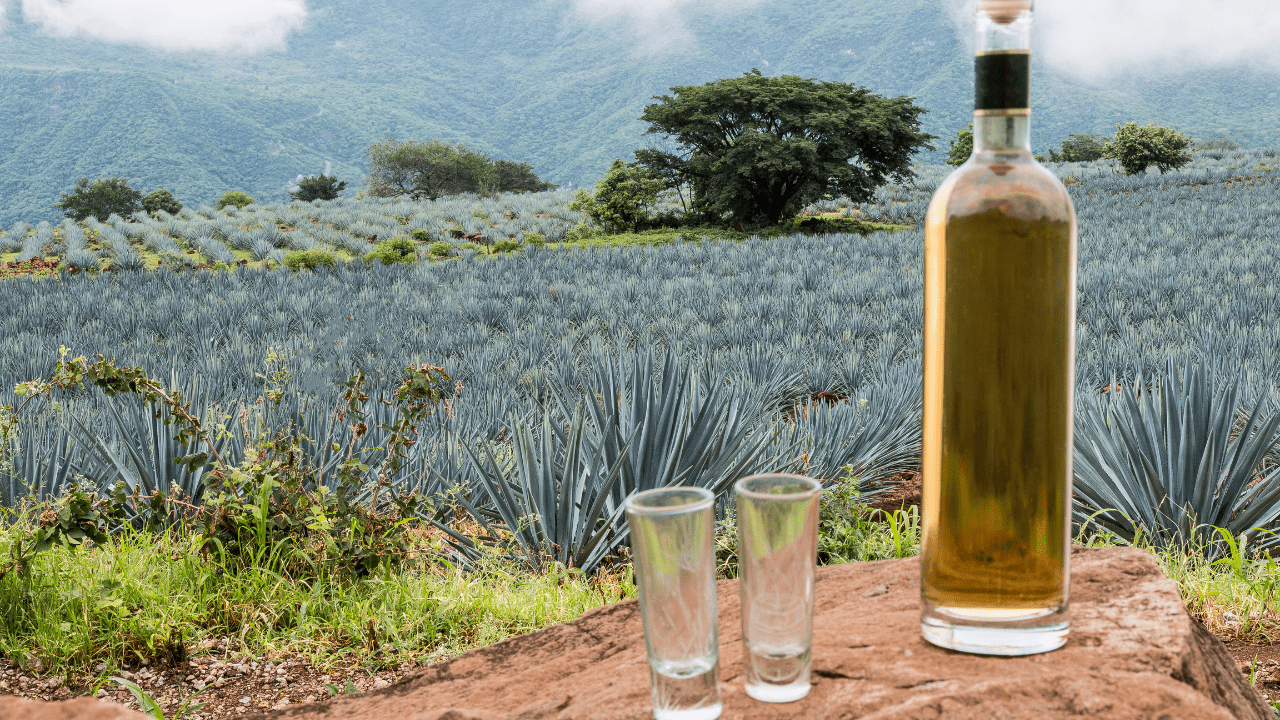Mexican Tequila holds a special place in the heart of Mexico and is considered a cultural treasure. It is not just a drink; it is a symbol of Mexican heritage, tradition, and craftsmanship.
When people think of Mexico, one of the first things that often come to mind is Tequila.
What sets Tequila apart is its unique production process and distinct flavor profile. It is made from the blue agave plant, which thrives in the volcanic soil of Jalisco, Mexico.
The agave plant takes many years to mature, and its heart, known as the piña, is harvested to create Tequila.
This careful selection and cultivation of the agave plant contribute to the rich and complex flavors found in Tequila.
Moreover, Tequila has gained significant international recognition. It has become a global ambassador for Mexican culture, representing the vibrancy, passion, and zest for life that Mexico is known for.
The distinct flavor and quality of Tequila have captured the hearts of connoisseurs and enthusiasts worldwide.
Additionally, Tequila has played a vital role in the country’s economy. Its production supports local communities and provides employment opportunities

The Historic Roots of Mexican Tequila
The agave plant has a fascinating history that goes back thousands of years. While it’s challenging to pinpoint an exact creator, we can credit nature for the creation of agave.
It is believed that agave evolved naturally over time in the arid regions of Mexico and parts of the southwestern United States.
The cultivation and use of agave by humans can be traced back to ancient Mesoamerican civilizations.
These indigenous communities discovered that the sap of the agave plant, known as “aguamiel,” could be fermented to create an alcoholic beverage.
The aguamiel was the precursor to the first beverage that eventually gave rise to Tequila.
Unfortunately, due to the absence of written records from that time, we don’t have an exact date of when the first agave-based beverage was created.
However, we know that agave has been a part of Mesoamerican cultures for thousands of years, as evidenced by archaeological findings and historical accounts.
The beverage that directly led to the birth of Tequila is known as “pulque.” Pulque is a traditional Mexican alcoholic drink made from the fermented aguamiel, or sap, of the agave plant.
It was highly regarded by the ancient civilizations, including the Aztecs, who considered it sacred and reserved it for special occasions.
Over time, as the process of distillation was introduced to the region, pulque evolved into what we now know as Tequila.
Distillation allowed for the production of a stronger and more refined spirit from the fermented agave juice.
The transformation from pulque to Tequila took place in the 16th century when the Spanish conquistadors brought the art of distillation to Mexico.
Key Ingredients for Authentic Mexican Tequila
Mexican Tequila is made from the blue agave plant, specifically the heart of the plant called the piña, it resembles a large pineapple and is the part of the agave that is harvested and used to produce Tequila.
The process begins with the careful selection of mature blue agave plants, which can take anywhere from 7 to 10 years to reach optimal maturity.
This selection is crucial to ensure the highest quality Tequila, skilled workers called jimadores are responsible for identifying and harvesting the mature agave plants.
They use a special tool called a coa to remove the long spiky leaves, leaving behind the piña.
Once the piñas are harvested, they are taken to the distillery for further processing. The piñas are then cut into smaller pieces and cooked to convert the starches into fermentable sugars.
Traditional methods involve baking the piñas in large ovens called hornos, while modern techniques use autoclaves for faster and more controlled cooking.
After cooking, the softened piñas are crushed to extract the juice. Traditionally, this was done by using a large stone wheel called a tahona, which rolls over the piñas to crush them.
In modern production, mechanical shredders are often used. The extracted juice, known as the agave juice or mosto, is collected and transferred to fermentation tanks.
During fermentation, yeast is added to the agave juice to convert the sugars into alcohol. The fermentation process typically takes several days to a week, allowing the yeast to work its magic and create the desired flavors and aromas.
Once fermentation is complete, the liquid is distilled. Distillation involves heating the fermented juice and collecting the vapors that contain alcohol.
Tequila is usually double-distilled, which means it goes through two rounds of distillation to refine the flavors and increase the alcohol content.
The second distillation is particularly important for creating the distinct character of Tequila.
After distillation, the Tequila is often aged in wooden barrels, such as oak, to develop more complex flavors.
The aging process can vary, ranging from a few months to several years, depending on the desired style of Tequila.
Aging in barrels allows the spirit to take on the characteristics of the wood, adding depth and richness to the final product.
The Distinctive Production in Tequila, Mexico
Tequila, Jalisco, is the heart and soul of Mexican Tequila production for several reasons. The region’s geographical and environmental characteristics create the perfect conditions for cultivating and distilling the blue agave plant, the key ingredient in Tequila.
Firstly, the volcanic soil found in the region of Tequila is incredibly fertile. This soil is rich in minerals and nutrients, providing the agave plants with the ideal foundation to grow and thrive.
The volcanic soil imparts unique flavors and characteristics to the agave, contributing to the distinctive taste profile of Tequila.
Secondly, the climate of Tequila, Jalisco, is well-suited for agave cultivation, the region experiences a combination of warm days and cool nights, which allows the agave plants to mature slowly and develop complex flavors.
This diurnal temperature variation is crucial for the agave’s sugar accumulation, resulting in a sweeter and more flavorful final product.
Additionally, the altitude of Tequila, Jalisco, plays a significant role in Tequila production. The region sits at an elevation ranging from 1,000 to 2,000 meters (3,280 to 6,560 feet) above sea level.
This higher altitude offers cooler temperatures and reduced humidity, which helps the agave plants grow more slowly, producing higher quality sugars and flavors.
Furthermore, the Tequila region’s long-standing tradition and expertise in Tequila production have made it a hub for distilleries, skilled workers, and tequila knowledge.
The people of Tequila, Jalisco, have inherited generations of knowledge and craftsmanship in cultivating, harvesting, and distilling agave.
This accumulated expertise and dedication to the craft have elevated Tequila production to an art form.
The Tequila Regulatory Council, which oversees the production and certification of Tequila, has also designated the region of Tequila, Jalisco, as the official origin of Tequila.
This recognition reinforces the area’s importance and unique status in Tequila production.
Global Recognition and Iconic Status
Tequila’s versatility in cocktails has contributed to its global popularity. It serves as the foundation for numerous classic and contemporary mixed drinks, offering endless possibilities for creative concoctions.
One iconic cocktail is the Margarita, a refreshing blend of Tequila, lime juice, and orange liqueur, often served with a salt rim.
The Margarita has become synonymous with Tequila and is beloved by cocktail enthusiasts worldwide.
Tequila is also a staple in other popular cocktails like the Tequila Sunrise, a vibrant mix of Tequila, orange juice, and grenadine, and the Paloma, a refreshing combination of Tequila, grapefruit soda, lime juice, and a salt rim.
These cocktails showcase the versatility of Tequila and highlight its ability to blend harmoniously with other flavors.
Moreover, the rise of craft cocktails and mixology has further propelled Tequila into the spotlight. Bartenders and mixologists worldwide appreciate the complexity and character that Tequila brings to their creations.
They experiment with different ingredients, infusions, and techniques to showcase Tequila’s unique qualities in innovative and exciting ways.
Additionally, the rich cultural heritage associated with Tequila has also contributed to its international fame.
Tequila represents Mexico’s vibrant traditions, celebrations, and zest for life. It embodies the spirit of fiestas, making it a popular choice for festive occasions and social gatherings worldwide.
Lastly, the global demand for Tequila has led to its increased exportation. Tequila has become one of Mexico’s most exported beverages, reaching consumers in countries far and wide.
Its reputation for quality, craftsmanship, and authenticity has made it a sought-after spirit on the international market.

